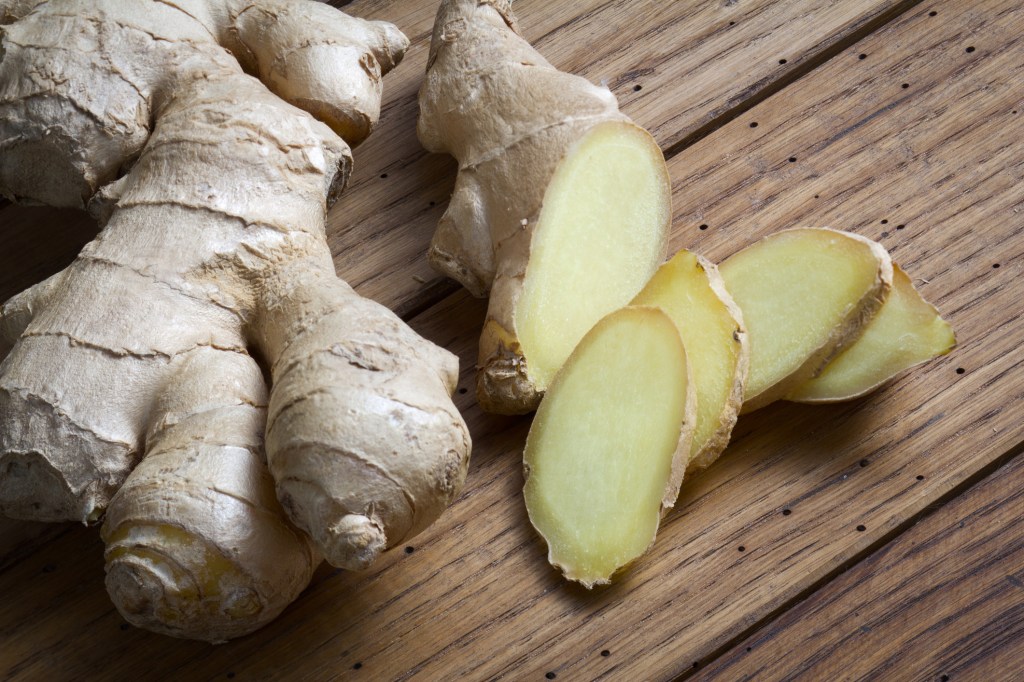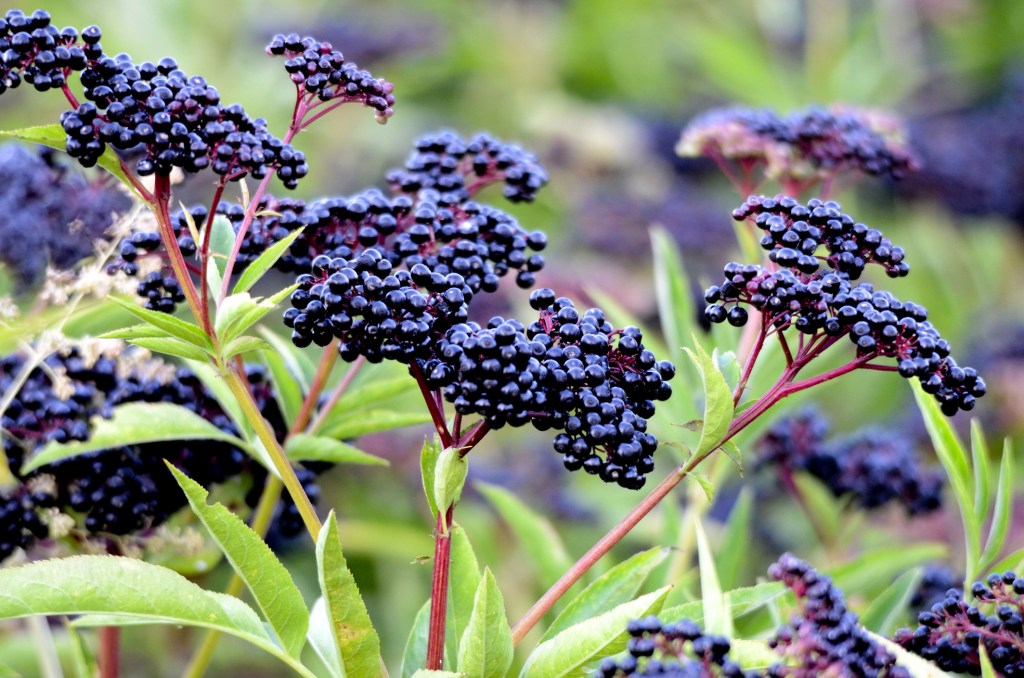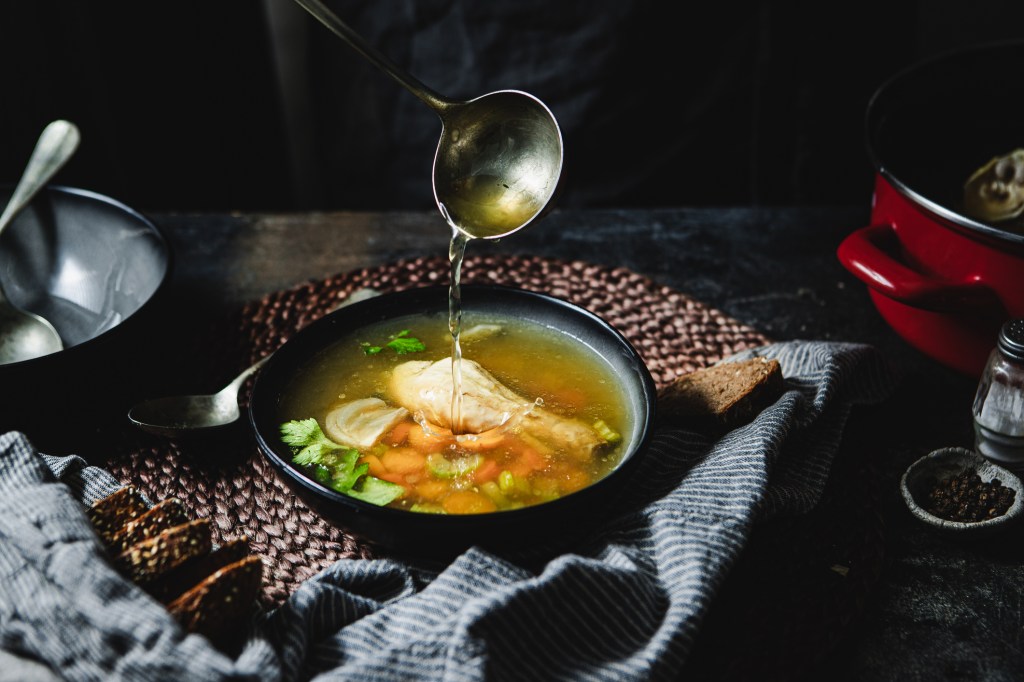With the onset of cooler fall temperatures across much of the United States, it’s unfortunately time to prepare for cold and flu season. While seasonal influenza viruses circulate year-round, rates of the respiratory illness tend to pick up in October, peak in the winter, and ebb in the spring. Many different influenza viruses can cause the flu, and the most prevalent types can change from year to year. If you’ve ever had a nasty case of this bug, you know it’s a force to be reckoned with: Fever, coughing, a stuffy nose, body aches, fatigue, and even vomiting and diarrhea are all possible symptoms.
Medical professionals recommend getting the annual flu vaccine, washing your hands, and staying away from people who are sick to avoid catching the virus, but nothing is 100% effective. Numerous pharmacy purchases can provide relief, but there are also a handful of natural remedies available to help soothe your symptoms. While a physician’s care is irreplaceable, particularly in the event of severe illness, these natural treatments might give your body the boost it needs — and are likely already in your pantry.
Honey

Bees are onto something when it comes to this sweet, sticky substance. It’s not just a sugary condiment, though — honey has long been known to contain antimicrobial properties that combat viruses and bacteria.
A 2014 study in the Archives of Medical Research found that manuka honey “efficiently inhibited influenza virus replication.” And a 2020 literature review in BMJ Evidence-Based Medicine found that honey appeared to improve and even shorten symptoms in patients with upper respiratory infections. Try it by the spoonful or in an herbal tea with some lemon to quell your cough — and maybe even knock out a flu virus or two.
RELATED: Manuka Honey Inhibits Breast Cancer in Humans Cells — And Could Extend to Other Cancers, Study Says
Ginger

The kick Zingiber officinale — or ginger — provides to a dish may also help you kick the flu. According to Healthline, its characteristic scent and flavor come from the oil gingerol, which contains antioxidant properties that can reduce the stress your body’s cells experience during an infection. The root also fights germs and has anti-inflammatory properties that can relieve body aches and digestive symptoms associated with illness. Boil a couple of slices of raw ginger in water for a few minutes, and you’ve got yourself a pungent tea to get you through a bout of the flu.
Elderberry

A shrub varietal of the elder plant, Sambucus nigra, or black elderberry, has been a coveted natural therapy in Europe since ancient times, while its less-commercialized cousin Sambucus canadensis has been important for healing in North American Indigenous communities. When ripe (unripe berries and other parts of the plant actually contain toxic cyanide), the dark berries taste sweet and offer a host of even sweeter health benefits: They can fight not only the inflammation caused by the body’s immune response to a pathogen, but the pathogen itself.
Elderberry’s praises have been sung for centuries — Hippocrates referred to the plant as his “medicine chest” in 400 B.C., per JSTOR — but modern-day medicine has only just begun to scientifically investigate S. nigra’s inner workings. A 2011 study in BMC Complementary Medicine and Therapies found that elderberry extract can work against both flu viruses and several bacteria that also cause upper respiratory infections, helping prevent a case of the flu from worsening into pneumonia. And a 2019 meta-analysis dubbed S. nigra a “potentially safer alternative to prescription drugs for routine cases of the common cold and influenza.”
Star Anise

A staple ingredient of Chinese five-spice powder and Vietnamese pho, star anise is a whimsically-shaped spice with a fragrant, licorice-like flavor made from the dried fruit of the Illicium verum tree. It adds a soothing warmth to broths and teas, but it’s also been a crucial component of herbal medicine in Asia for centuries.
A 2020 literature review in Phytotherapy Research stated that, beyond having numerous other biological benefits, star anise contains shikimic acid, a crucial component of the active ingredient in Tamiflu. Tamiflu works by preventing viruses from multiplying in your body, which can shorten the length of symptoms and give your immune system the leg-up it needs. Add a piece of star anise to your honey-ginger-lemon tea — who knew the fight against the flu could be so tasty?
Chicken Soup

Your grandma wasn’t lying: Science suggests that a hearty bowl of chicken soup might be just the thing to help you fight a cold or flu. Healers dating back to the ancient Greeks have touted the sickness-busting properties of a steaming bowl of chicken broth and vegetables, but the biological mechanism at play long remained a mystery.
In 1993, Dr. Stephen Rennard, a professor of pulmonary and critical care medicine at the University of Nebraska Medical Center, brought his own family soup recipe into a lab and found that it slowed the movement of white blood cells whose germ-fighting response leads to the unfortunate inflammatory symptoms we associate with colds and the flu. Rennard’s study suggests that it’s the combination of ingredients in chicken soup that react with each other to reduce immune activity.
“All vegetables and the soup had activity. I think it’s the concoction,” Rennard told the Scottsbluf Star-Herald in 2008. So the next time you have the sniffles, skip the store-bought cans of soup and instead make a big pot at home. (We suggest trying this five-star recipe.)
Water

Last but not least, perhaps one of the most powerful tools you have in fighting the flu can be found in your kitchen sink. You can probably hear your doctor’s voice stressing the importance of water: “Drink plenty of fluids.” We could all stand to drink more anyway, but especially when we’re sick, our bodies crave extra fluids to account for the water lost in fighting infection, whether through sweating, fever, diarrhea, or vomiting.
“Bodily fluids carry your immune cells throughout your body and staying hydrated helps them get where they need to go to fight off infections,” research scientist Jennifer Williams told Abbott Nutrition News. Williams said water also helps regulate body temperature (preventing a long-lasting or too-high fever), keeps your mucous membrane moisturized and ready to fight off infection, and allows your cells to better absorb nutrients so they can continue recovering from illness. The exact amount of water you should drink can vary from person to person, but a good rule of thumb is to drink enough that your urine is as close to clear as possible.
You can also fight the virus with water in additional ways. Turning on your humidifier in the winter might help reduce the spread of the flu indoors, but you can take this a step further to help reduce symptoms by inhaling steam. According to Healthline, warm, moist air can loosen mucus that may be trapped in your respiratory system. It won’t make the flu go away, but it could alleviate symptoms and allow you to breathe better while fighting the virus. Use a dedicated steam inhaler device, lean over a bowl of hot water with a towel draped over your head, or take a hot shower to let the steam work its magic.
RELATED: Self-Care Practices That Are Seen as Luxurious But Should Be Done Regularly












